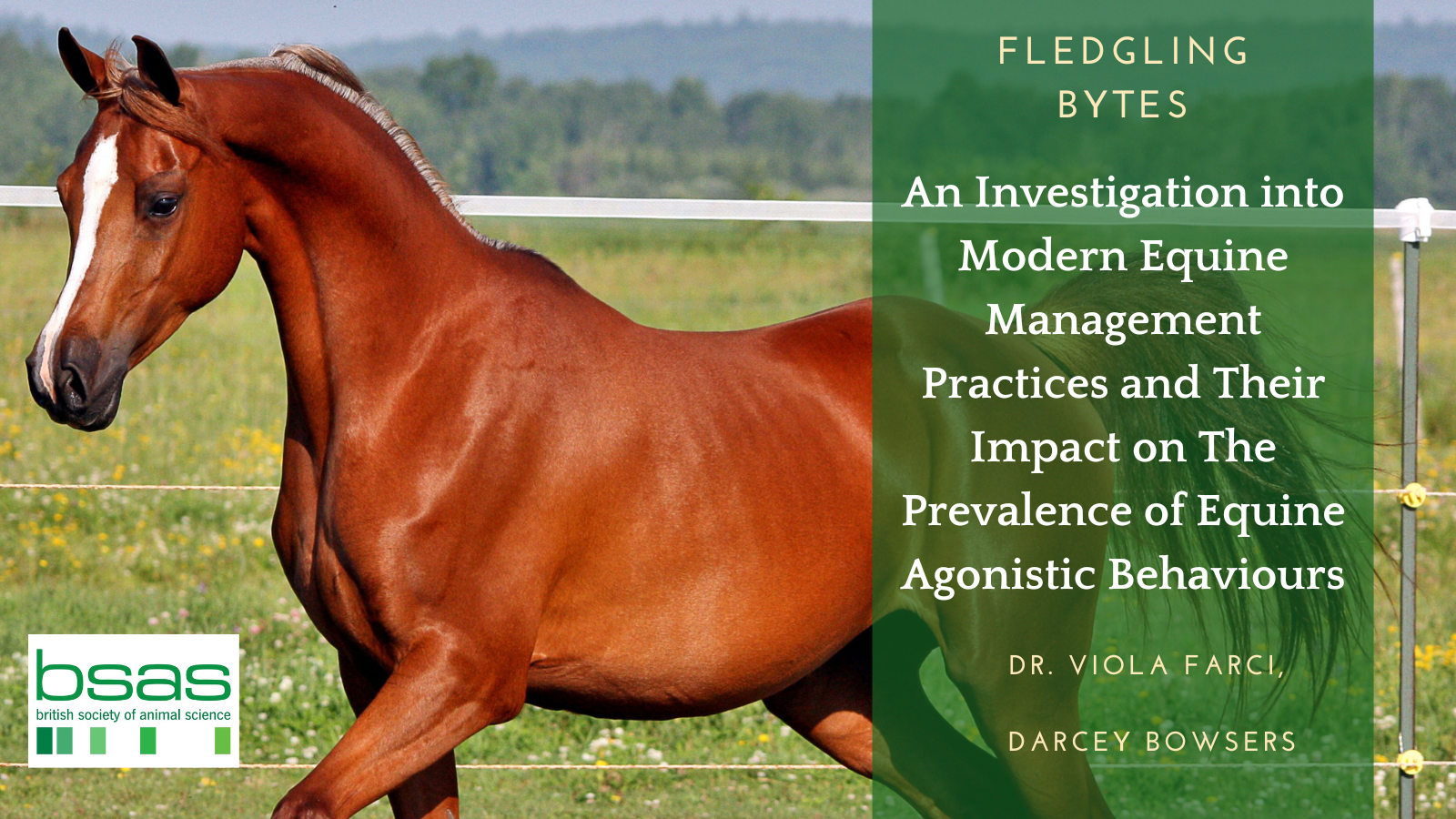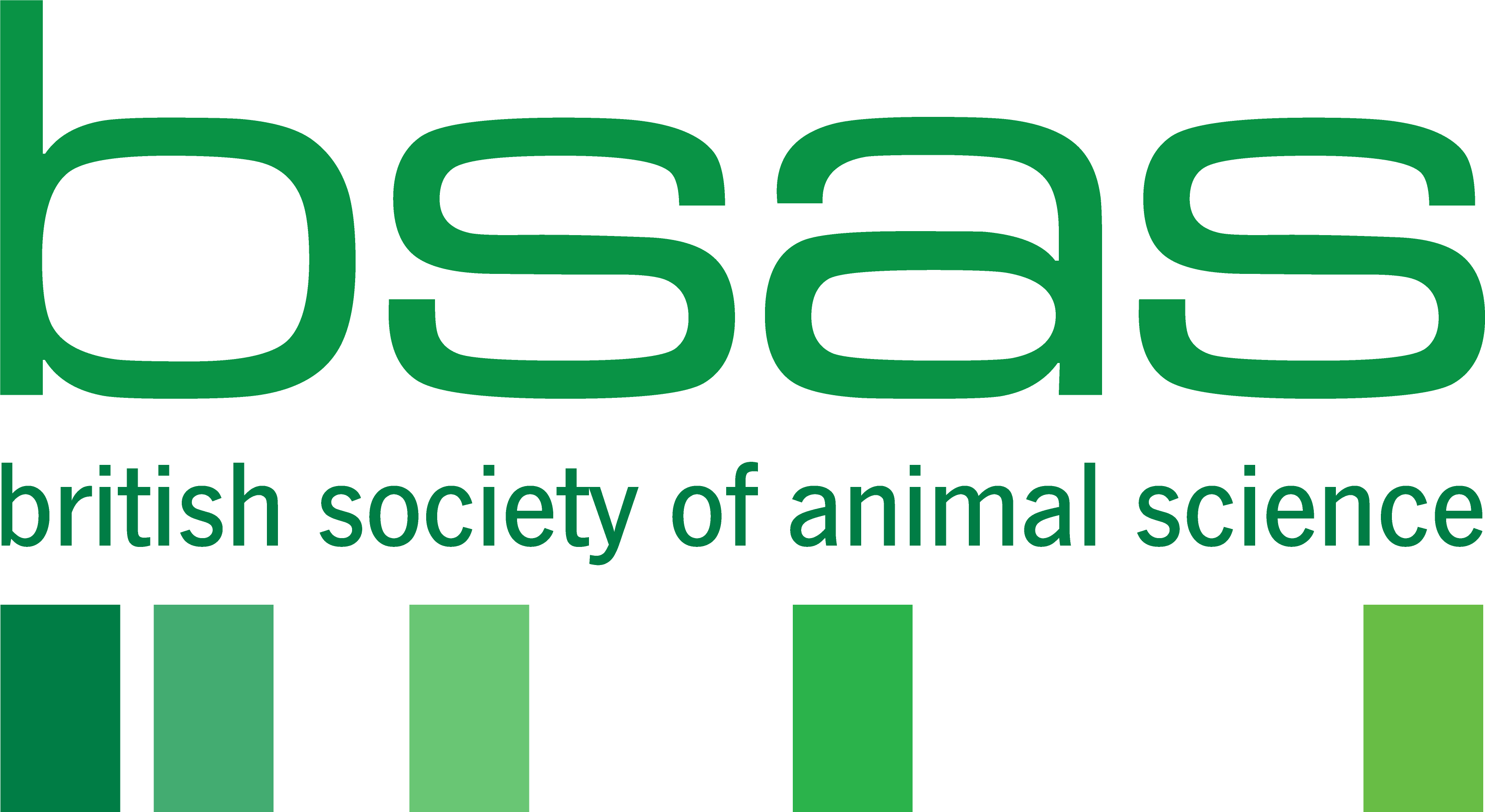
An Investigation into Modern Equine Management Practices and Their Impact on The Prevalence of Equine Agonistic Behaviours.

Author of the dissertation: Darcey Bowser, Duchy College
Summarised by: Dr. Viola Farci, SRUC
Key takeaway message: Horses’ agonistic behaviour is associated with management practices such as access to roughage, the presence of a routine, turn-out time, and enclosure size. An optimal management of these practices can positively contribute to the horse’s welfare and behaviour.
Introduction and aims:
Agonistic behaviours including aggressive, defensive and submissive behaviours can occur as a result of human action and/or management factors. It emerged from a survey conducted in 2009, that unwanted equine behaviours were a primary factor leading to their abandonment or rehoming due to the risks posed to both humans and horses.
To effectively manage horses in a domestic environment, is essential to understand their evolutionary history, wild behaviours and motivations. In the wild, horses graze and roam freely in social groups for most of the day while domestic horses, especially within competition environment, often face restricted movement, limited grazing time, and imposed social structures, contrasting with their natural instincts.
Such management practices can result in a range of behavioural and health problems including but not limited to stereotypic behaviours, colics and weight loss. Furthermore, these limitations may contribute to elevated aggression levels, resulting in a greater frequency of injuries. The occurrence of aggressive behaviours seen in interspecific (horse to human) and intraspecific (horse to horse) interactions, is often associated with poor levels of welfare. At present, a standardised equine quality of life assessment framework is lacking, therefore, developing a behaviour-based system to accurately assess equine emotional states is vital. To do so, identifying the factors contributing to the prevalence of these behaviours is essential.
The aim of the study was to investigate the current modern management practices and how they contribute to the prevalence of equine agonistic behaviour in the UK.
Methods
A questionnaire comprising 42 standardised closed-ended questions was distributed online via several social media groups, collecting 428 responses. The questions gathered information on:
- owner and equine demographics
- horse management practices
- equine behaviour
Data was statistically analysed using a Chi-squared test on Minitab.
Key findings
The most prevalent directed agonistic behaviours reported were pawing (13.7%), nipping (10.6%), pushing (9.2%) and bite threat (8.5%) whilst the most common intra-specific behaviours were bite threat (27.7%), approach (26.8%), ears back (26.8%), herding (21.1%), kick threat (20.4%), chasing (16.8%), nipping (16.6%) and biting (10.2%). The association between management practices and agonistic behaviours is summarised in the table below:
Table 1 showing the management practices associated with agonistic behaviours (human directed and intraspecific).
|
|
Human directed |
Intra-specific |
|
Access to roughage |
Yes |
NA |
|
Routine presence |
No |
Yes |
|
Turnout time |
No |
Discordant results |
|
Social Deprivation |
No |
No |
|
Turnout group |
No |
Yes |
|
Enclosure size |
Yes |
No |
|
Turnout area type |
No |
NA |
|
Stabling arrangements |
No |
NA |
Yes= P<0.05
No=P>0.05
NA= not applicable
Conclusion :
In summary, this study identified some common practices that influence the equine agonistic behaviour, highlighting the need for optimising the management of domestic horses to ensure better welfare. Factors such as turn-out time, presence of a set routine and enclosure size significantly affect the agonistic behaviour of horses and need to be considered carefully.
